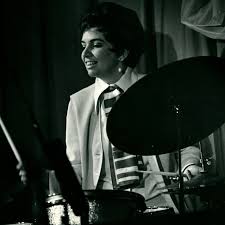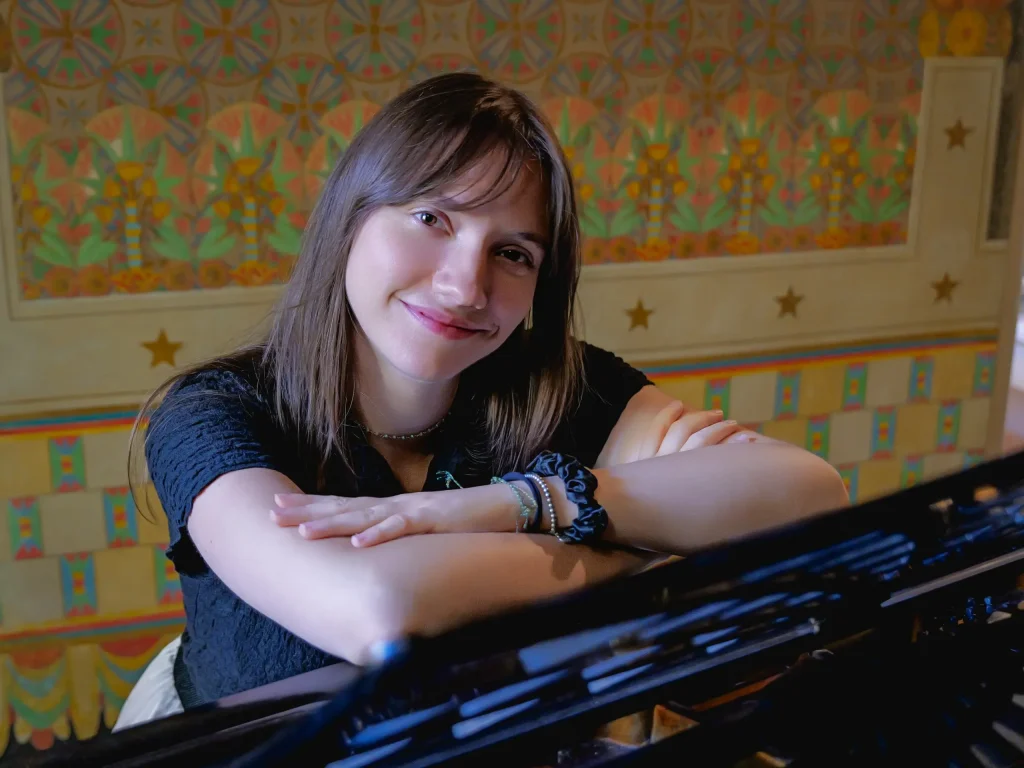Brea, California, September 23, 1929
September 17, 2021

Dottie Dodgion, born Dorothy Rosalie Giaimo in 1929, became one of jazz’s most influential yet underrated figures. Growing up in California in a family struggling with financial difficulties, she found solace in music, leading to an extraordinary career. With a natural sense of rhythm and unwavering dedication, Dottie overcame the barriers of a male-dominated culture, becoming a true pioneer in the jazz world.
Beginnings: music as a refuge
Dottie had a difficult childhood. Her father, a self-taught drummer, abandoned the family when she was still very young. Sent to boarding school by her mother, she found comfort in dance. At ten years old, after surviving significant family traumas, she discovered rhythm as a form of healing and freedom.
Her visceral connection to music became evident in her teenage years when she began singing in local bands. By sixteen, she was already performing professionally with guitarist Nick Esposito.
In 1948, Charles Mingus—one of jazz’s greatest bassists—recognized her potential and guided her toward a distinctive vocal style based on phonetic improvisation rather than lyrics: the art of scat singing, in which Dottie excelled.
The transition to drums
In the 1950s, Dottie transitioned from singing to drumming, encouraged by musicians like Eugene Wright of the Dave Brubeck Quartet. Despite challenges—including opposition from her first husband, bassist Monty Budwig—she developed a unique style characterized by what singer Carol Sloane described as “razor-sharp timing.” She became a fixture in Bay Area jazz clubs, collaborating with icons like Miles Davis and Dizzy Gillespie.
Her talent did not go unnoticed… In 1961, Benny Goodman hired her as his drummer, only to fire her when audiences started cheering for her more than for him. This episode epitomized the struggles she faced in trying to make her mark in a jazz world that rarely celebrated female musicians.
Collaborating with female jazz legends
One of the defining moments of Dottie’s career was her participation in Now’s the Time (1977), an album recorded alongside Marian McPartland (piano), Mary Osborne (guitar), Vi Redd (sax), and Lynn Milano (bass). This project not only showcased her immense talent but also underscored the importance of women supporting one another in an industry historically more exclusive than inclusive.
Throughout the 1960s and 1970s, Dottie worked with other groundbreaking female jazz artists such as Melba Liston (trombone) and Carline Ray (piano, guitar), paving the way for future generations. Drummer Terri Lyne Carrington has cited Dottie as one of her primary inspirations.
Collaborating with female jazz legends

Later years and legacy
Even into her nineties, Dottie continued to perform regularly in Pebble Beach, California. After suffering a shoulder injury from a fall, she refused to quit: when she could no longer play drums, she sang instead. Her final performance took place in March 2020, just before the COVID-19 pandemic brought live music to a halt.
Dottie passed away on September 17, 2021, just days before her 92nd birthday. Her autobiography, The Lady Swings: Memoirs of a Jazz Drummer, co-written with Wayne Enstice and published shortly before her death, serves as a tribute to her extraordinary life.
To experience Dottie Dodgion’s musicality, I suggest listening to two of her most notable recordings:
“Don’t let your ego get in the way. Think about the overall sound more than yourself. Listen to others – much more”.
Per scoprire la musicalità di Dottie Dodgion, ti propongo un paio di ascolti racchiusi nei suoi album più celebri: Dottie Dodgion Sings e Dot’s Bop/Penny (singoli). Ogni nota è un testamento della sua passione e della sua resilienza.
Dottie Dodgion Sings – Dancing in the Dark (Arthur Schwartz, Howard Dietz) showcases her sharp, controlled scat singing.
Dot’s Bop – A vibrant bebop piece composed by Dottie herself.
In this interview, the drummer and vocalist shares anecdotes and the invaluable lessons she learned from her father:

